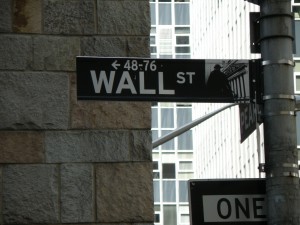Getting to New York
If you’re travelling from the UK on a direct flight you will be ending up in either John F Kennedy Airport (JFK) or Newark Airport in New Jersey. Both are easily accessible to Manhattan. Although JFK is the better known hub, Newark can be worth considering as it tends to have shorter immigration queues.
Book it…
British Airways have numerous flights to New York daily and who offer good connections from London to the rest of the UK.
We also love Virgin who, again fly direct, have a flight time to suit everyone and who usually have a great entertainment line up.
If you want to check out all the options then we like Skyscanner for a good listing of all the operators running flights.
If you’re travelling with children, I would advise getting a taxi from either airport. It won’t cost a whole lot more than public transport for the average journey and will be much less stressful. If you want to make your own way by public transport then Newark is on a mainline train route to NYC. Bear in mind that trains from Newark are destined for Penn Station which is akin to a subterranean maze, once in you may never find your way out. Although at least the NJ Transit trains do arrive at one end of the maze!
 From Penn Station you can reach the rest of Manhattan and indeed New York by using the subway or, if you make it out of the maze, a taxi. Penn Station is in midtown Manhattan so if you have booked a hotel here then it may well be easier to walk depending on how much luggage you have.
From Penn Station you can reach the rest of Manhattan and indeed New York by using the subway or, if you make it out of the maze, a taxi. Penn Station is in midtown Manhattan so if you have booked a hotel here then it may well be easier to walk depending on how much luggage you have.
From JFK, again I would advise a taxi but the airport is served by the Airtrain which will in turn allow you to pick up either the subway or the LIRR (Long Island Rail Road).
Both airports are also served by coach and shuttle bus services which can be booked in advance and will pick up either from designated locations in Manhattan or from your hotel.
Getting around New York
Walking
Much of Manhattan is easily walkable and the grid system used for the vast majority of the island makes it easy to navigate once you’ve got the hang of it. Here’s my little guide:
- Each street horizontally on the grid has a number (except in Lower Manhattan where the streets have names and where you’ll need a map). Going vertically on the grid the streets are called Avenues and are either named or numbered.
- The main thing that can be confusing are references to Uptown, Midtown and Downtown, not surprisingly as it can change depending on who you speak to! In general anything north of where you are standing is heading Uptown and south of where you are is considered heading Downtown. In terms of areas though, anything north of 59th Street is considered Uptown, Midtown is roughly between 14th and 59th Street and everything below 14th Street is downtown.
- 5th Avenue is the dividing line for East and West, also known as Crosstown.
- Each address will have a grid reference telling you its street number and its location in relation to 5th Avenue. For example 60 w73rd Street is number 60 on 73rd Street, West of 5th Avenue.
- It’s worth knowing that the distance between north-south blocks or streets takes 1-2 minutes to walk while the distance between avenues is nearer 3- 5 minutes.
Subway & buses
At some point, unless you are taxiing everywhere, it’s likely you will want or need to use the subway.
You can buy Metrocard tickets at all stations as well as at some retailers (they will display a Metro sign in the window) which allow you several journeys . Each single journey costs $2.50 and it’s worth having a small subway map to refer to as it can be quite confusing. To use a Metro card swipe it along the channel on the side of the turnstile with the Metrocard name facing you. Metrocards can also be used on NYC buses by pushing the card into the slot as you get on the bus.
Taxis
Taxis of the famous yellow variety can be hailed in the street. If the light on top of the cab is on then the taxi is available to flag down, if the light is off then the driver already has a fare. (The rules changed in 2012 to be less confusing for passengers as there used to be another light configuration that indicated the driver was off-duty).
Click here to check out all the latest deals and offers in our monthly roundup or why not sign up to our newsletter to get all the latest tips straight to your inbox?


